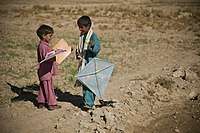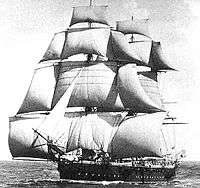kite
English
Etymology 1






The noun is from Middle English kyte, kīte, kete (“a kite endemic to Europe, especially the red kite (Milvus milvus)”), from Old English cȳta (“kite; bittern”),[1][2] from Proto-Germanic *kūtijô, diminutive of *kūts (“bird of prey”), from Proto-Indo-European *gū- (“to cry, screech”). The English word is cognate with Scots kyt, kyte (“kite; bird of prey”), Middle High German kiuzelīn, kützlīn (“owling”) (modern German Kauz (“barn owl; screech owl”)).
Sense 2 (“lightweight toy”) is from the fact that it hovers in the air like the bird (sense 1).[2]
The verb is derived from the noun.[3]
Pronunciation
- (Received Pronunciation, General American) enPR: kīt, IPA(key): /kaɪt/
Audio (GA) (file) - Rhymes: -aɪt
Noun
kite (plural kites)
- A bird of prey of the family Accipitridae.
- A pair of kites built a nest on the cliff.
- 1575, George Gascoigne, “Councell to Duglasse Diue Written vpon This Occasion. [...]”, in The Posies of George Gascoigne Esquire. […], printed at London: For Richard Smith, […], OCLC 1048958044; republished in William Carew Hazlitt, compiler, The Complete Poems of George Gascoigne […] In Two Volumes, volume I, [London]: Printed for the Roxburghe Library, 1869, OCLC 885426345, page 370:
- And yet the ſillie kight, well weyde in each degree, / May ſerue ſometimes (as in his kinde) for mans commoditie. / The kight can weede the worme from corne and coſtly ſeedes, / The kight cã kill the mowldiwarpe, in pleaſant meads yͭ breeds: / Out of the ſtately ſtreetes the kight can clenſe the filth, / As mẽ can clẽſe the worthleſſe weedes frõ fruteful fallow tilth; […]
- 1600, Thomas Danett, chapter 13, in A Continuation of the Historie of France, from the Death of Charles the Eight where Comines [i.e., Philippe de Commines] Endeth, till the Death of Henry the Second, London: Printed by Thomas East for Thomas Charde, OCLC 228714403, page 91:
- […] Monſieur de Sanſſac was appointed to attend vpon him [Francis I of France] with all ſorts of Haukes, wherein the ſaide Emperour ſemed to take great delight, eſpecially with flying at the Kight, which the French call Voler le Milan, […]
- 1627, [Francis Bacon], “IX. Century. [Experiments in Consort, Touching Perception in Bodies Insensible, Tending to Natural Diuination, or Subtill Trialls.]”, in Sylua Syluarum: Or A Naturall Historie: In Ten Centuries. […], London: Published after the authors death, by VVilliam Rawley; printed by I[ohn] H[aviland and Augustine Mathewes] for William Lee […], OCLC 1044242069; 3rd edition, London: Published […] by VVilliam Rawley; printed by J[ohn] H[aviland] for William Lee […], 1631, OCLC 1044372886, paragraph 824, page 208:
- […] Kites flying aloft, ſhew Faire and Drie Weather. […] [T]he Kite affecteth not ſo much the Groſſneſſe of the Aire, as the Cold and Freſhneſſe thereof; For being a Bird of Prey, and therefore Hot, ſhee delighteth in the Fresh Aire; And (many times) flyeth againſt the Wind, […]
- Any bird of the subfamily Milvinae, with long wings and weak legs, feeding mostly on carrion and spending long periods soaring; specifically, the red kite (Milvus milvus) and the black kite (Milvus migrans).
- Synonym: glede
- 1816, G[eorge] Gregory; [Jeremiah Joyce], “FALCO”, in A Dictionary of Arts and Sciences. [...] In Three Volumes. […], volume II, 1st American edition, Philadelphia, Pa.: Published by Isaac Peirce, […], sold also by Coale and Maxwell, […], and James F. Shores, […]; Dennis Heartt, printer, OCLC 14835555:
- The milvus, or kite, is a native of Europe, Asia, and Africa. […] Its motion in the air distinguishes it from all other birds, being so smooth and even that it is scarcely perceptible.
- A bird of the genus Elanus, having thin pointed wings, that preys on rodents and hunts by hovering; also, any bird of related genera in the subfamily Elaninae.
- Some species in the subfamily Perninae.
- (figuratively) A rapacious person.
- c. 1603–1606, [William Shakespeare], […] His True Chronicle Historie of the Life and Death of King Lear and His Three Daughters. […] (First Quarto), London: Printed for Nathaniel Butter, […], published 1608, OCLC 54196469, [Act I, scene iv]:
- [D]eteſted kite, thou li[e]ſt[.] [M]y traine, and[sic, meaning are] men of choiſe and rareſt parts, that all particulars of dutie knowe, and in the moſt exact regard, ſupport the worſhip of their name, […]
- Detested kite, you lie! My train [i.e., knights in attendance] are men specially chosen for their rare qualities, know all the particulars of their duty, and most conscientiously uphold their reputation, […]
-
- A lightweight toy or other device, traditionally flat and shaped like a triangle with a segment of a circle attached to its base or like a quadrilateral (see sense 9), carried on the wind and tethered and controlled from the ground by one or more lines.
- On windy spring days, we would fly kites.
- 1859 December 13, “The Ghost in the Garden Room”, in Charles Dickens, editor, The Haunted House. The Extra Christmas Number of All the Year Round. […], volume II, Christmas number, London: No. 26, Wellington Street [printed by C. Whiting, […]], OCLC 781591950, page 38, column 1:
- What for do ye want to get baker's bread, aunt? This dough will rise as high as a kite in the south wind.
- 1921 March, “Keeping Up with the March of Science: Facts for the Man who Wants to Know”, in Waldemar Kaempffert, editor, The Popular Science Monthly, volume 98, number 3, New York, N.Y.: Modern Publishing Company, […], OCLC 228666442, page 71, column 1:
- Housing a Dirigible […] When the ship is kept head on to the wind, it is easy enough to guide her, but when a wind blows across the mouth of the shed, every man's heart is in its throat. The ship offers so much more surface sidewise than endwise that she becomes an enormous kite.
- A tethered object which deflects its position in a medium by obtaining lift and drag in reaction with its relative motion in the medium.
- (astrology) A planetary configuration wherein one planet of a grand trine is in opposition to an additional fourth planet.
- 1992, Erin Sullivan, Retrograde Planets: Traversing the Inner Landscape (Contemporary Astrology), London: Arkana Publishing, →ISBN, pages 144–145:
- Frequently a kite formation is created by one of the planets in the trine by its opposition to another planet, which allows expulsion and redirection of the pent-up energy associated with a closed circuit.
-
- (banking, slang) A blank cheque; a fraudulent cheque, such as one issued even though there are insufficient funds to honour it, or one that has been altered without authorization.
- 1991 May 21, Alex Barnum, “Suspect named in kiting case”, in San Jose Mercury News, San Jose, Calif.: Mercury Herald Co., OCLC 8786973, page 8E:
- But she said, "if this was a kite, he didn't realize that you don't have the float time of the old days," which made check-kiting easier.
-
- (cycling, slang) A rider who is good at climbs but less good at descents.
- (geometry) A polygon resembling the shape of a traditional toy kite (sense 3): a quadrilateral having two pairs of edges of equal length, the edges of each pair touching each other at one end.
- Four-sided figures without parallel sides include trapezoids and kites.
- (military aviation, slang) An aeroplane or aircraft.
- 2004, Harry Foxley, Marking Time: A Soldier’s Story, Victoria, B.C.; Crewe, East Cheshire: Trafford Publishing, →ISBN, page 133:
- This time, the engine roared and the kite rocked against the brakes then sluggishly rolled down the strip.
-
- (sailing, dated) In a square-rigged ship: originally a sail positioned above a topsail; later a lightweight sail set above the topgallants, such as a studding sail or a jib topsail.
- 1857, R[alph] W[aldo] Emerson, “Voyage to England”, in English Traits, Boston, Mass.: Phillips, Sampson, and Company, OCLC 401140, page 33:
- Our good master keeps his kites up to the last moment, studding-sails alow and aloft, and, by incessant straight steering, never loses a rod of way.
- This is the first attested use of the word in this sense.[4]
-
- (sailing, slang) A spinnaker (“supplementary sail to a mainsail”).
- (Britain, dialectal) The brill (Scophthalmus rhombus), a type of flatfish.
- (US, prison slang) A (usually concealed) letter or oral message, especially one passed illegally into, within, or out of a prison.
Derived terms
- black kite
- box kite
- go fly a kite
- high as a kite
- kiteboarding
- kite buggy
- kite fishing
- kite surfing
- powerkite
- stunt kite
- yellow-billed kite
Translations
|
|
|
|
|
Verb
kite (third-person singular simple present kites, present participle kiting, simple past and past participle kited)
- (transitive) To cause (something) to move upwards rapidly like a toy kite; also (chiefly US, figuratively) to cause (something, such as costs) to increase rapidly.
- Rising interest rates have kited the cost of housing.
- 1942, William Irish [pseudonym; Cornell Woolrich], Phantom Lady (Story Press Book), Philadelphia, Pa.; New York, N.Y.: J. B. Lippincott Co., OCLC 3620558, page 189:
- Lombard swung at the sweet pea he had dropped, caught it neatly with the toe of his shoe, and kited it upward with grim zest, as though doing that made him feel a lot better.
- (transitive, video games) To keep ahead of (an enemy) in order to attack repeatedly from a distance, without exposing oneself to danger.
- 2001, Juanita Jones, Everquest Player’s Guide: Prima’s Official Strategy Guide, Roseville, Calif.: Prima Games, →ISBN, page 70:
- If you're pulling or kiting a creature and it aggros an innocent passer-by, it's your fault and you should apologize.
-
- (transitive, intransitive) To (cause to) glide in the manner of a kite (“bird”).
- Synonym: soar
- The wind kited us toward shore.
- (transitive, intransitive, banking, slang) To write or present (a cheque) on an account with insufficient funds, either to defraud or expecting that funds will become available by the time the cheque clears.
- He was convicted of kiting checks and sentenced to two years in prison.
- 1863, J[oseph] Sheridan Le Fanu, “In which Dr. Sturk Tries This Way and That for a Reprieve on the Eve of Execution”, in The House by the Church-yard. [...] In Three Volumes, volume II, London: Tinsley, Brothers, […], OCLC 18952474, pages 65–66:
- “An affair of honour?” said O’Flaherty, squaring himself. He smelt powder in everything. / “More like an affair of dishonour,” said Toole, buttoning his coat. “He’s been ‘kiting’ all over the town. Nutter can distrain for his rent to-morrow, and Cluffe called him outside the bar to speak with him; put that and that together, sir.”
- (transitive, intransitive, US, slang, by extension) To steal.
- 1982 August 27, Stephen King, “Rita Hayworth and Shawshank Redemption”, in Different Seasons, New York, N.Y.: Viking Press, →ISBN; republished in Stephen King Goes to the Movies, 1st Pocket Books paperback edition, New York, N.Y.: Pocket Books, February 2009, →ISBN, page 470:
- Andy also kept a box of that [steel wool] in his cell, although he didn't get it from me—I imagine he kited it from the prison laundry.
-
- (intransitive, rare) Usually preceded by an inflection of go: to fly a toy kite.
- I’m going kiting this weekend.
- (intransitive) To travel by kite, as when kitesurfing.
- We spent the afternoon kiting around the bay.
- (intransitive, figuratively) To move rapidly; to rush.
- (intransitive, engineering, nautical) To deflect sideways in the water.
- (intransitive, US, prison slang) To pass a (usually concealed) letter or oral message, especially illegally into, within, or out of a prison.
- 1966, Rose Giallombardo, Society of Women: A Study of a Women’s Prison, New York, N.Y.: John Wiley & Sons, OCLC 803053918, page 236:
- I have been working like a dam mule this morning and just found time to kite you.
-
Translations
|
Etymology 2
Origin uncertain; possibly:
- from Middle English kit, kitte (“wooden bucket or tub; (figuratively) belly”),[5] possibly from Middle Dutch kitte (“wooden vessel of hooped staves”) (modern Dutch kit (“metal can used mainly for coal”)), further etymology unknown;[6] or
- from Middle English *kid (attested only in compounds such as kide-nẹ̄re (“kidney; region of the kidneys, loins”)), possibly from Old English *cyde, *cydde (“belly”),[7] cwiþ (“belly; womb”), from Proto-Germanic *kweþuz (“belly, stomach”), from Proto-Indo-European *gʷet-, *gut- (“rounding, swelling; entrails, stomach”), from *gʷu-, *gū- (“to bend, bow, curve, distend, vault”). The English word is cognate with Icelandic kviði (“womb”), kviður (“stomach”), kýta (“stomach of a fish; roe”), Middle Low German kūt (“entrails”), West Flemish kijte, kiete (“fleshy part of the body”).
Pronunciation
- (Received Pronunciation, General American) enPR: kīt, IPA(key): /kaɪt/
Audio (GA) (file) - Rhymes: -aɪt
Noun
kite (plural kites)
- (Northern England, Scotland, dialectal) The stomach; the belly.
- 1909, Charles Collins; Fred Murray (lyrics and music), “Boiled Beef and Carrots”, performed by Harry Champion; republished in John Mullen, “The Songs and Their Content”, in The Show Must Go On!: Popular Song in Britain during the First World War, Farnham, Surrey; Burlington, Vt.: Ashgate Publishing, 2015, →ISBN, page 102:
- Don't live like vegetarians / On food they give to parrots, / Blow out your kite, from morn 'til night, / On boiled beef and carrots.
-
Alternative forms
- kyte (Scotland)
Pronunciation
- (Received Pronunciation, General American) IPA(key): /ˈkiːtɛ/[8]
- Rhymes: -iːtɛ
- Hyphenation: ki‧te
Noun
kite (plural kite)
- (Egyptology) A measure of weight equivalent to 0.1 deben (about 0.32 ounces or 9.1 grams).
- 1981, Pierre Montet, “The Arts and the Professions”, in A[ymer] R[obert] Maxwell-Hyslop and Margaret S[tefana] Drower, transl., Everyday Life in Egypt in the Days of Ramesses the Great, Philadelphia, Pa.: University of Pennsylvania Press, →ISBN, page 167:
- [I]n the great Harris papyrus, […] precise quantities are recorded by weight in terms of the deben (about 2½ oz.) and the qite (¼ oz.) of gold, silver, copper and precious stones, without any reference to their value. […] Five pots of honey were bought for five qite of silver and an ox for five qite of gold.
- 1983, Allen B. Lloyd, “The Late Period, 664–323 BC”, in B[ruce] G[raham] Trigger; B[arry] J[ohn] Kemp; D[avid Bourke] O’Connor; A. B. Lloyd, Ancient Egypt: A Social History (Cambridge History of Africa), Cambridge: Cambridge University Press, published 2001, →ISBN, page 328:
- [I]t was found necessary to employ media of exchange, and emmer wheat and silver were both used for this purpose. The latter was particularly favoured, but it was normally treated by weight, being measured in kite (9.53 g) and deben (10 kite) in purely Egyptian contexts, though foreigners such as the Jewish mercenaries at Elephantine could use their own metrological systems.
- 2003, Pascal Vernus, “The Plunder of Western Thebes”, in David Lorton, transl., Affairs and Scandals in Ancient Egypt: Translated from the French, Ithaca, N.Y.; London: Cornell University Press, →ISBN, page 25:
- The scribe of the temple Sedy set out with the pure priest and goldsmith Tuty for the frames; they removed one deben and three and a half qite of gold, which they took for the chief of the gang Pameniu.
- 2016, Brian Muhs, “The Saite and Persian Periods (664–332 BCE)”, in The Ancient Egyptian Economy: 3000–30 BC, Cambridge: Cambridge University Press, →ISBN, pages 189–190:
- In the Saite and Persian Periods, Abnormal Hieratic and Demotic texts usually measure value as weights of silver. […] The weights of silver are almost always either the deben of 91 grams, or the kite of 9.1 grams. In the Persian Period, Demotic texts sometimes also refer to staters equated to two kite, or five to the deben.
- 2017 May, Ralph Ellis, “King David”, in Solomon, Pharaoh of Egypt, 4th edition, Cheshire: Edfu Books, →ISBN, page 57:
- The shekel was an Israelite unit of weight that appears to have weighed about 10g, and so it is the rough equivalent of the Egyptian kite, which also weighed about 10g.
-
Alternative forms
References
- “kīte, n.” in MED Online, Ann Arbor, Mich.: University of Michigan, 2007, retrieved 18 April 2019.
- “kite, n.”, in OED Online

- “kite, v.”, in OED Online

- Richard Mayne (2000), “kite”, in The Language of Sailing, Chicago, Ill.; Manchester: Fitzroy Dearborn Publishers, →ISBN, page 162.
- “kit(te, n.(1)” in MED Online, Ann Arbor, Mich.: University of Michigan, 2007, retrieved 20 April 2019.
- “kit, n.1”, in OED Online

- “kide-nẹ̄re, n.” in MED Online, Ann Arbor, Mich.: University of Michigan, 2007, retrieved 20 April 2019.
- James P[eter] Allen (2010), “Lesson 9. Numbers.”, in Middle Egyptian: An Introduction to the Language and Culture of Hieroglyphs, 2nd edition, Cambridge: Cambridge University Press, →ISBN, page 105: “qdt "qite" ("KEY-teh")”.
Further reading





- “KITE, sb.2” in Joseph Wright, editor, The English Dialect Dictionary: […], volume III (H–L), London: Published by Henry Frowde, […], publisher to the English Dialect Society, […]; New York, N.Y.: G. P. Putnam’s Sons, 1902, OCLC 81937840, page 459, column 2.

